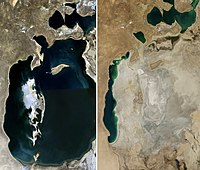
Insights into early ontogenesis: characterization of stress and development key genes of pikeperch (Sander lucioperca) in vivo and in vitro
Sign Up to like & getrecommendations! Published in 2021 at "Fish Physiology and Biochemistry"
DOI: 10.1007/s10695-021-00929-6
Abstract: There are still numerous difficulties in the successful farming of pikeperch in the anthropogenic environment of various aquaculture systems, especially during early developmental steps in the hatchery. To investigate the physiological processes involved on the… read more here.
Keywords: insights early; ontogenesis characterization; early ontogenesis; characterization stress ... See more keywords

Effects of water temperature and pikeperch (Sander lucioperca) abundance on the stock–recruitment relationship of Eurasian perch (Perca fluviatilis) in the northern Baltic Sea
Sign Up to like & getrecommendations! Published in 2019 at "Hydrobiologia"
DOI: 10.1007/s10750-019-04008-z
Abstract: How spawning stock size, environmental conditions and recruitment relate to each other is an essential question in understanding population dynamics of exploited fish stocks. We estimated the recruitment of Eurasian perch (Perca fluviatilis), one of… read more here.
Keywords: perch; recruitment; water temperature; stock ... See more keywords

Effects of hormonal treatment before water warming on synchronisation of spawning time, oocyte size, and egg quality in pikeperch (Sander lucioperca).
Sign Up to like & getrecommendations! Published in 2021 at "Animal reproduction science"
DOI: 10.1016/j.anireprosci.2021.106712
Abstract: Inducing reproduction during periods of the year when spawning typically does not occur is an important goal for the feasibility of commercial fish farming. Pre-seasonal propagation of pikeperch generally occurs about 3 months before the… read more here.
Keywords: water; water warming; time; egg quality ... See more keywords

Effect of a short-term sodium chloride bath on juvenile pikeperch (Sander lucioperca) welfare
Sign Up to like & getrecommendations! Published in 2021 at "Aquaculture Reports"
DOI: 10.1016/j.aqrep.2020.100569
Abstract: Abstract This study aimed to determine the impact of immersing pikeperch (body weight approximately 94 g) in an aqueous solution of sodium chloride on gasometric, hematological, and biochemical indicators. The impact of the sodium chloride… read more here.
Keywords: blood; immersion; sodium chloride; short term ... See more keywords

Comparative angler catch rates of native versus alien piscivorous fish in an invaded river fishery
Sign Up to like & getrecommendations! Published in 2021 at "Fisheries Research"
DOI: 10.1016/j.fishres.2021.105970
Abstract: Abstract Recreational angling is a major introduction pathway for large-bodied alien fishes into freshwaters, where the fish are released to enhance angling success and increase angler satisfaction, despite this often resulting in invasive populations. There… read more here.
Keywords: fish; pikeperch; angler; catch rates ... See more keywords

The substrate selection and spawning behaviour of pikeperch Sander lucioperca L. broodstock under pond conditions
Sign Up to like & getrecommendations! Published in 2018 at "Aquaculture Research"
DOI: 10.1111/are.13819
Abstract: Spawning substrate is a critical factor in reproduction of commercially valuable percids. Substrate preferences of pikeperch Sander lucioperca were investigated using three types of artificial spawning substrates: long fibred brush, artificial turf and smooth plastic.… read more here.
Keywords: sander lucioperca; pikeperch sander; substrate selection; pikeperch ... See more keywords

Stable isotopes and gut contents indicate differential resource use by coexisting asp (Leuciscus aspius) and pikeperch (Sander lucioperca)
Sign Up to like & getrecommendations! Published in 2018 at "Ecology of Freshwater Fish"
DOI: 10.1111/eff.12414
Abstract: Differential use of habitat and prey resources is an important mechanism that may allow coexistence of sympatric species. Unlike interactions between smaller cyprinid and percid fishes, the resource use by coexisting predatory asp (Leuciscus aspius)… read more here.
Keywords: asp leuciscus; use; resource use; use coexisting ... See more keywords

High Mobility and Flexibility in the Habitat Use of Early Juvenile Pikeperch (Sander lucioperca) Based on a Mark-Recapture Experiment
Sign Up to like & getrecommendations! Published in 2023 at "Diversity"
DOI: 10.3390/d15060720
Abstract: Disentangling the role of factors responsible for juvenile fish dispersal is essential to understand the ecology of individual species, setting the corresponding conservation status and evaluating the potential risk in case of invasion. Because of… read more here.
Keywords: pikeperch sander; mobility flexibility; reservoir; high mobility ... See more keywords

Effect of Different Routes of Vaccination against Aeromonas salmonicida on Rearing Indicators and Survival after an Experimental Challenge of Pikeperch (Sander lucioperca) in Controlled Rearing
Sign Up to like & getrecommendations! Published in 2020 at "Vaccines"
DOI: 10.3390/vaccines8030476
Abstract: Bacterial diseases are a significant problem in the controlled rearing of fish. Furunculosis (Aeromonas sp.), flavobacteriosis (Flavobacterium sp.), and pseudomonadosis (Pseudomonas sp.) are currently the most frequently identified diseases in recirculating aquaculture systems of various… read more here.
Keywords: survival experimental; aeromonas salmonicida; effect; controlled rearing ... See more keywords